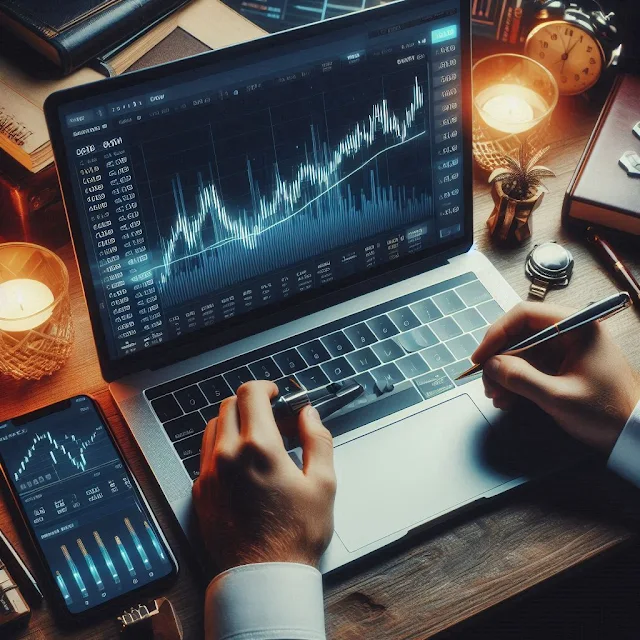How to Invest in Foreign Currencies: A Beginner’s Guide to Forex Trading
Introduction: Why Invest in Foreign Currencies?
Investing in foreign currencies—also known as forex trading—offers unique opportunities for profit. Unlike the stock market, forex operates 24/5, making it accessible at all hours. Plus, the global nature of forex means you can trade from anywhere.
But forex trading isn’t just about buying and selling currencies. It requires strategy, patience, and an understanding of market movements. In this guide, we’ll break down how beginners can start investing in foreign currencies, the risks involved, and practical steps to get started.
1. What Is Foreign Currency Investing?
Foreign currency investing, also known as forex (foreign exchange) trading, involves buying and selling different currencies to profit from changes in their exchange rates. For example, if you buy U.S. dollars (USD) with euros (EUR) and the USD strengthens, you can sell your dollars for a profit.
Ways to Invest in Foreign Currencies:
Forex Trading: Buying and selling currency pairs on the forex market.
Currency ETFs (Exchange-Traded Funds): Investing in funds that track currency movements.
Foreign Currency Savings Accounts: Holding money in foreign currencies to benefit from exchange rate appreciation.
Foreign Bonds: Investing in bonds issued by governments or corporations in other countries.
2. How the Forex Market Works
The forex market is the largest and most liquid financial market in the world, with daily trading volume exceeding $7 trillion.
Key Features of Forex Trading:
✔ Currency Pairs: Forex trading is based on pairs like EUR/USD (Euro vs. U.S. Dollar) or GBP/JPY (British Pound vs. Japanese Yen).
✔ Leverage: Brokers allow traders to control larger positions with smaller capital, but this increases risk.
✔ Market Hours: Open 24 hours a day, five days a week, with major trading sessions in New York, London, Tokyo, and Sydney.
3. Steps to Start Investing in Foreign Currencies
Step 1: Learn the Basics
Before investing, it's essential to understand forex terms like bid/ask price, pips, and spreads. Resources like free online courses, YouTube tutorials, and books on forex trading can help.
Step 2: Choose a Reliable Forex Broker
A good forex broker should be:
✔ Regulated (Check for licenses from authorities like the SEC, FCA, or CySEC)
✔ User-Friendly (Easy-to-use trading platform)
✔ Low Fees (Tight spreads and low commissions)
✔ Good Customer Support (24/7 availability)
Some popular brokers for beginners include:
eToro (Social trading platform)
IG Group (Great for educational resources)
OANDA (Good for beginners and low fees)
Step 3: Open a Demo Account
Most brokers offer demo accounts where you can practice trading with virtual money before risking real funds.
Step 4: Choose a Currency Pair
Beginners often start with major pairs like:
✔ EUR/USD (Euro vs. U.S. Dollar)
✔ GBP/USD (British Pound vs. U.S. Dollar)
✔ USD/JPY (U.S. Dollar vs. Japanese Yen)
These pairs are less volatile and have lower trading costs.
Step 5: Develop a Trading Strategy
Successful forex traders don’t just guess; they follow structured strategies, such as:
✔ Day Trading: Short-term trades held for minutes or hours.
✔ Swing Trading: Holding trades for days or weeks to capture trends.
✔ Position Trading: Long-term investing based on economic trends.
4. Understanding Risks in Forex Trading
Like any investment, forex trading comes with risks. Here’s what to watch out for:
✔ Leverage Risk: While leverage can amplify profits, it can also magnify losses.
✔ Market Volatility: Currency prices fluctuate due to global events, interest rates, and political factors.
✔ Emotional Trading: Fear and greed often lead to poor decisions—use a trading plan.
How to Manage Risks:
✔ Use Stop-Loss Orders: Automatically closes a trade at a preset loss level to prevent excessive losses.
✔ Trade Small Amounts: Start with small trades to minimize risk.
✔ Stay Informed: Follow financial news and market analysis to make informed decisions.
5. Best Tools & Resources for Forex Trading
✔ Trading Platforms: MetaTrader 4 (MT4), MetaTrader 5 (MT5), TradingView
✔ News & Analysis: Forex Factory, Bloomberg, Investing.com
✔ Books for Beginners: "Currency Trading for Dummies" by Kathleen Brooks, "A Beginner’s Guide to Forex Trading" by Matthew Driver
FAQs
1. Can beginners make money investing in foreign currencies?
Yes, but forex trading requires learning, strategy, and risk management. It’s important to start with a demo account before trading real money.
2. How much money do I need to start forex trading?
Many brokers allow you to start with as little as $10-$100. However, it’s recommended to begin with at least $500-$1,000 to trade comfortably.
3. Is forex trading better than stock investing?
It depends on your goals. Forex trading is more liquid and operates 24/5, but it’s also riskier. Stock investing is more stable and suitable for long-term wealth building.
4. How do forex traders make money?
Traders profit from exchange rate fluctuations, buying currencies at a lower price and selling them at a higher price (or vice versa).
5. What’s the safest way to invest in foreign currencies?
If you want lower risk, consider currency ETFs or foreign currency savings accounts instead of active forex trading.
Final Thoughts: Is Forex Trading Right for You?
Investing in foreign currencies can be profitable, but it’s not a get-rich-quick scheme. It requires patience, research, and discipline. If you’re willing to learn and manage risks properly, forex trading can be a great addition to your investment portfolio.
Ready to Get Started?
Sign up for a demo account with a trusted forex broker today and begin your journey into currency investing!









